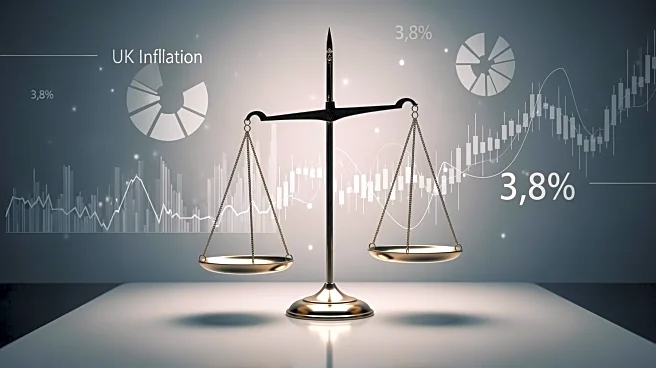What's Happening?
The United Kingdom's annual inflation rate remained steady at 3.8% in September, contrary to forecasts predicting an increase to 4%. This stability in inflation rates comes amidst broader economic concerns
and potential monetary policy adjustments. The Bank of England has been closely monitoring inflation trends as it considers future interest rate decisions. The current inflation rate is nearly double the Bank's target, prompting cautious deliberations over potential rate cuts. The upcoming Budget in November may influence the Bank's decision-making process, with analysts suggesting that rates could remain unchanged until the end of 2026.
Why It's Important?
The steadiness of the UK's inflation rate is significant as it impacts monetary policy decisions and economic forecasts. A stable inflation rate can provide a more predictable economic environment, potentially easing concerns over rapid price increases. However, the rate remains high compared to the Bank of England's target, which could limit its ability to implement aggressive rate cuts. The inflation rate's stability may offer some relief to consumers and businesses facing cost pressures, but the broader economic implications, including potential impacts on interest rates and consumer spending, remain complex.
What's Next?
The Bank of England's upcoming decisions will be influenced by the November Budget and ongoing economic indicators. Analysts are closely watching for any signs of policy shifts, particularly in response to inflation trends and economic growth forecasts. The Bank's cautious approach suggests that significant rate changes may be delayed, with potential implications for borrowing costs and investment strategies. Stakeholders, including businesses and consumers, will need to navigate the economic landscape with an eye on inflation developments and monetary policy adjustments.











